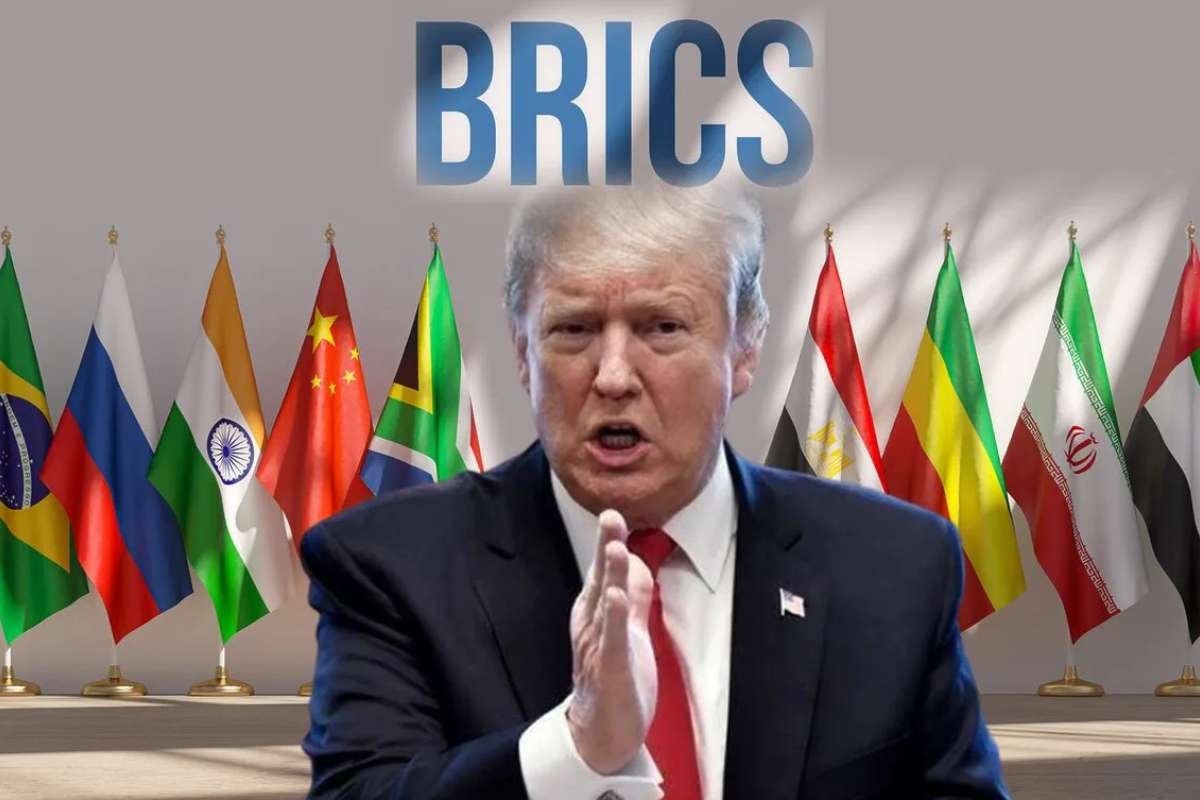Former U.S. President Donald Trump issued a stark warning on July 6–7, declaring that any nation aligning with the BRICS economic bloc would face an additional 10% tariff on goods exported to the U.S. Labeling these countries as promoting “anti-American policies,” Trump stated that the new Trump BRICS tariff would take effect from August 1 with no exceptions.
This policy coincides with the ongoing BRICS summit in Rio de Janeiro, where bloc leaders have gathered to promote economic cooperation and challenge Western-dominated trade norms. Trump’s administration has already started sending formal notifications to affected countries, and Commerce Secretary Howard Lutnick confirmed that, unless bilateral deals are secured, the Trump BRICS tariff penalties will be enforced.
BRICS Leaders Push Back Against ‘Coercive’ Trade Moves
The BRICS summit, attended by China, India, Brazil, and others, including new members like Saudi Arabia, Egypt, and Iran, issued a joint declaration that implicitly criticized the U.S., denouncing unilateral and coercive tariff measures. The declaration emphasized adherence to WTO norms and multilateral trade systems.
China’s Premier Li Qiang and India’s Prime Minister Narendra Modi were present in Rio, while Russian President Vladimir Putin joined virtually. The bloc also addressed broader geopolitical issues, including support for a two-state solution in the Israel–Palestine conflict and calls for peaceful resolution in global disputes. Though no BRICS nation directly named the U.S., the summit underscored growing resistance to what many in the bloc see as American economic intimidation.
Markets React as Deadline Looms for Trade Deals
Trump’s announcement rattled financial markets across Asia. Japan’s Nikkei and Chinese equities dipped around 0.5%, and oil prices slid nearly 0.8% following signs of OPEC+ production increases. Meanwhile, the Indian rupee weakened slightly, reflecting investor concerns over U.S. trade instability caused in part by the Trump BRICS tariff stance.
Behind the scenes, the U.S. is aggressively pursuing last-minute bilateral trade deals. Reports suggest that agreements with Vietnam and the UK are already finalized, while a mini-deal with India may be imminent. Treasury Secretary Scott Bessent stated that over 100 smaller trade partners will receive tariff notifications. For larger economies, particularly those aligned with BRICS, Trump warned that retaliatory tariffs could go as high as 50% if deals aren’t struck before the August 1 deadline.
Critics have flagged the lack of clarity around what constitutes “anti-American” alignment, calling the criteria subjective and potentially disruptive to long-standing trade relationships.
The Trump BRICS tariff, a 10% warning to BRICS-friendly nations, signals a sharp pivot back to protectionist U.S. trade policy, potentially redrawing global economic alliances. As the August deadline looms, countries are scrambling to either finalize trade agreements or brace for commercial fallout. Whether this tough stance results in new deals or deepens global divisions remains to be seen, but one thing is certain: the international trade landscape is entering turbulent waters.
Sources:
https://thehill.com/homenews/administration/5387268-trump-threatens-tariffs-brics-countries









